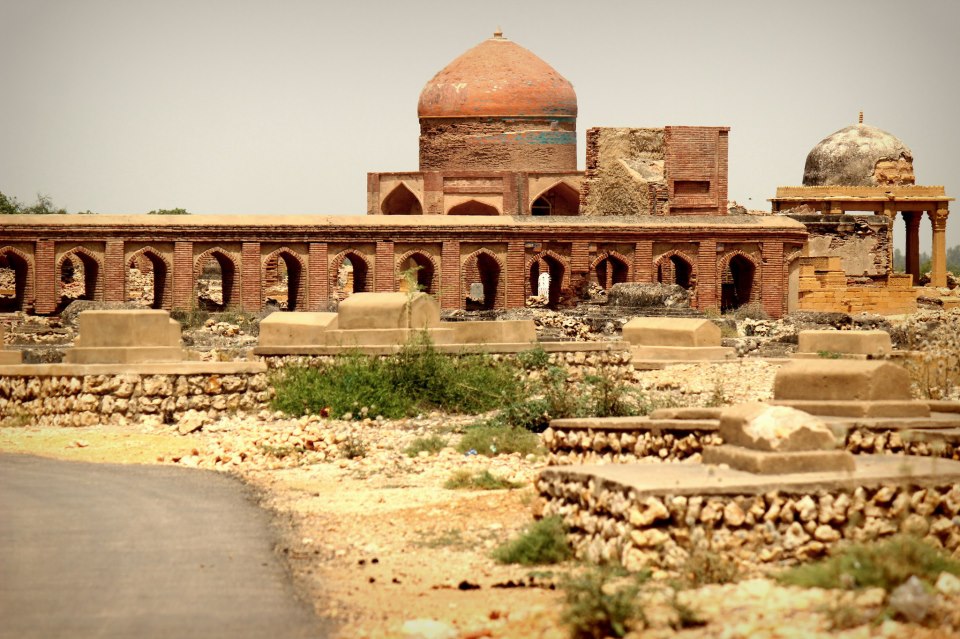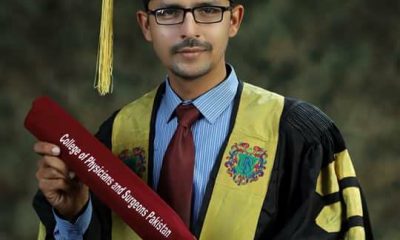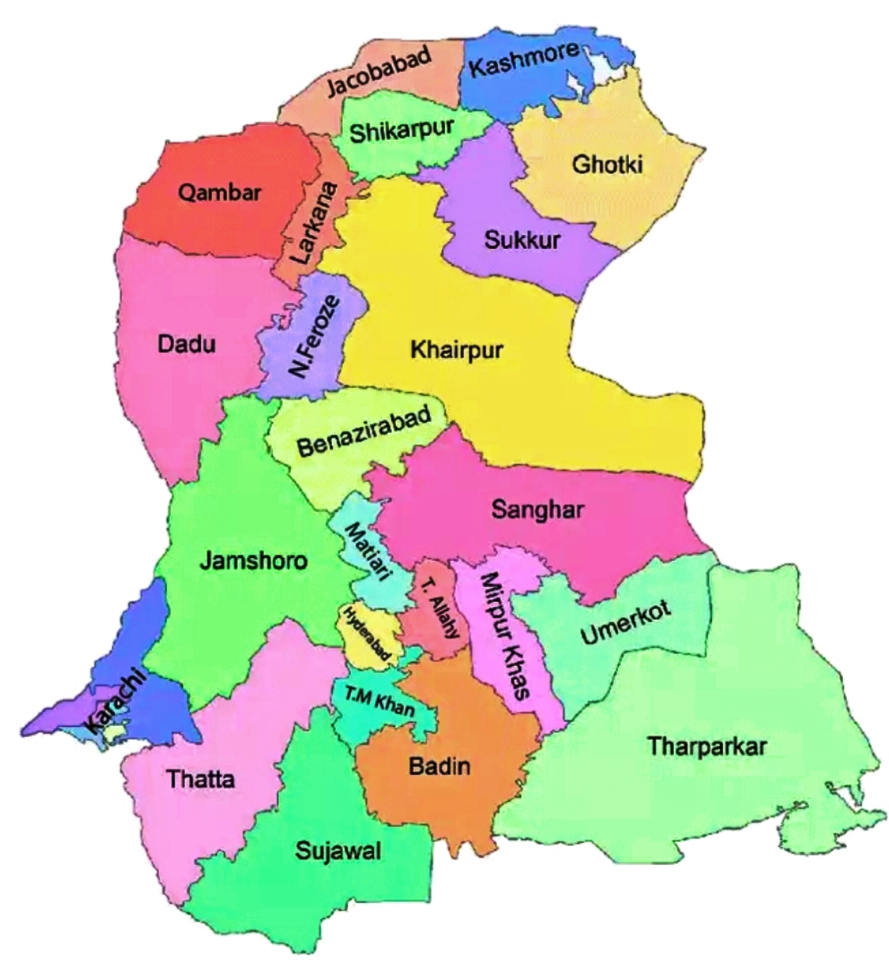The Sindh province has been designated after the river Sindh (Indus) which literally created it and has been also its sole means of sustenance. However, the importance of the river and close phonetically resemblance in nomenclature would make one consider Sindhu as the probable origin of the name of Sindh.
Later phonetical changes transformed Sindhu into Hindu in Pahlavi and into Hoddu in Hebrew. The Greeks (who conquered Sindh in 125 BC under the command of the Alexander the Great) rendered it into Indos, hence modern Indus.
The Indus valley civilization is the farthest visible outpost of archeology in the abyss of prehistoric times. The areas constituting Pakistan have had a historical individuality of their own and Sindh is the most important among such areas. The prehistoric site of Kot Diji in Sindh has furnished information of high significance for the reconstruction of a connected story which pushes back the history of Pakistan by at least another 300 years, from about 2,500 BC.
Evidence of a new element of pre-Harappan culture has been traced here. When the primitive village communities in Baluchistan were still struggling against a difficult highland environment, a highly cultured people were trying to assert themselves at Kot Diji one of the most developed urban civilization of the ancient world that flourished between the year 25,00 BC and 1,500 BC in the Indus valley sites of Moenjodaro and Harappa. The people were endowed with a high standard of art and craftsmanship and well-developed system of quasi-pictographic writing which despite ceaseless efforts still remains un-deciphered. The remarkable ruins of the beautifully planned Moenjodaro and Harappa towns, the brick buildings of the common people, roads, public-baths and the covered drainage system envisage the life of a community living happily in an organized manner.
The earliest authentic history of Sindh dates from the time when Alexander the Great abandoned his scheme of conquest towards the Ganges, alarmed at the discontent of his soldiers. He embarked a portion of the army in boats, floated them down the Jhelum and the Chenab, and marched the remainder on the banks of the river till he came to the Indus. There he constructed a fleet, which sailed along the coast towards the Persian Gulf with part of his forces, under the command of Nearchus and Ptolemy, whilst Alexander himself marched through Southern Baluchistan and Persia to Seistan or Susa. At that time Sindh was in the possession of the Hindus, the last of whose rulers was Raja Sahasi, whose race, as is reported by native historians, governed the kingdom for over two thousand years. The Persian monarchs were probably alluded to, for in the sixth century BC Sindh was invaded by them. They defeated and slew the monarch in a pitched battle and plundered the province and then left. Eight years after his accession to the Persian throne, Darius I, son of Hystaspes extended his authority as far as the Indus. This was about 513 BC.
The Arab conquest of Sindh by Muhammad Bin Qasim in 712 AD gave the Muslims a firm foothold on the sub-continent. The description of Hiun Tsang, a Chinese historian, leaves no doubt that the social and economic restrictions inherent in the caste differentiations of Hindu society had however, gradually sapped the inner vitality of the social system and Sindh fell without much resistance before the Muslim armies. According to Al-Idreesi, the famous city of Al-Mansura was founded during the reign of Mansur (754-775 AD) the second Khalifa of the Abbasid dynasty. Khalifa Harun-al-Rashid (786-809 AD) was able to extend the frontiers of Sindh on its western side. For nearly two hundred years since its conquest by Muhammad Bin Qasim, Sindh remained an integral part of the Umayyad and the Abbasid caliphates. The provincial governors were appointed directly by the central government. History has preserved a record of some 37 of them.
The Arab rule brought Sindh within the orbit of the Islamic civilization, Sindhi language was developed and written in the naskh script. Education became widely diffused and Sindhi scholars attained fame in the Muslim world. Agriculture and commerce progressed considerably. Ruins of Mansura, the medieval Arab capital of Sindh (11 kms south east of Shahdadpur) testify to the grandeur of the city and the development of urban life during this period.
In the 10th century, native people replaced the Arab rule in Sindh. Samma and Soomra dynasties ruled Sindh for long. These dynasties produced some rulers who obtained fame due to judicious dispensation and good administration.
Sindh was partially independent and the scene of great disorders till late in the sixteenth century when it failed into the hands of Emperor Akbar, and for a hundred and fifty years the chiefs paid tribute, but only as often as they were compelled to do so, to the Emperor at Delhi. Later the Kalhora clan claiming descent from the house of Abbas and long settled in Sindh produced religious leaders of whom Main Adam Shah attained prominence in the 16th century. His descendants continued to gather large following and this enabled them to capture political power in the north western Sindh under the leadership of Mian Nasir Muhammad. This happened in the 2nd half of the 17th century. By the turn of that century, foundations of the Kalhora power were firmly laid in the northern Sindh under the leadership of Mian Yar Mohammad. During the reign of his son, Mian Noor Muhammad, lower Sindh with Thatta as its capital came under the Kalhora administration (1150 A.H).
Under the banner of Mir Fateh Ali Khan Talpur, the Balochis defeated the last Kalhora ruler Mian Abdul Nabi in the battle of Halani in 1782 AD. Talpur Amirs regained the parts of Sindh (Karachi, Khairpur, Sabzal Kot and Umar Kot) which the last Kalhora chief had conceded to the neighboring rulers. By eliminating the foreign interference, which had plagued the Kalhora rule, and by their essentially democratic way of governance, the Talpurs were able to take the people into confidence and thus achieved.
Great many things within a short period of 60 years. They built up an excellent system of forts and outposts guarding the frontiers, extended the irrigation system, encouraged scholarly pursuits and educational institutions, and promoted trade and commerce internally as well as with the neighboring countries.
The British who came to Sindh also as traders became so powerful in rest of the sub-continent that in 1843 Sindh lost its independence falling prey to the British imperialistic policy. The Talpurs were defeated on the battlefields of Miani, Dubba and Kunhera and taken prisoners. The conquerors behaved inhumanly with the vanquished as they did with the Muslim rulers in India. Charles Napier who commanded the troops subsequently became the first Governor of the province of Sindh.
The British had conquered Sindh from their bases in Bombay and Kutch and their supporters were Hindus. Therefore, Sindh was annexed to the Bombay Presidency in 1843 and a constant policy to subdue the Muslim majority and to lionize the Hindu minority in Sindh was followed. Trade and commerce, Services and education became monopolies in the hands of the minority whom with the support of the rulers wrought havoc on Muslims. Within a few years forty percent of the Muslim land holdings passed on to the Hindu creditors.
It was after a long struggle that the cause of Sindh was supported by the Quaid-e-Azam Mohammad Ali Jinnah when he brought in his famous 14-points the demand of Sindh’s separation from Bombay Presidency. H.H. Sir Agh Khan, G.M. Syed, Sir Abdul Qayyum Khan (NWFP) and many other Indian Muslim leaders also played their pivotal rule that was why the Muslims of Sindh succeeded in getting Sindh separated from the Bombay Presidency in 1936.


 Sindh Icons2 years ago
Sindh Icons2 years ago
 Interviews2 years ago
Interviews2 years ago
 Sindh Icons2 years ago
Sindh Icons2 years ago
 Interviews2 years ago
Interviews2 years ago
 Sindh Icons2 years ago
Sindh Icons2 years ago
 Culture/Tourism2 years ago
Culture/Tourism2 years ago
 Sindh Icons2 years ago
Sindh Icons2 years ago
 Sindh Icons1 year ago
Sindh Icons1 year ago



















